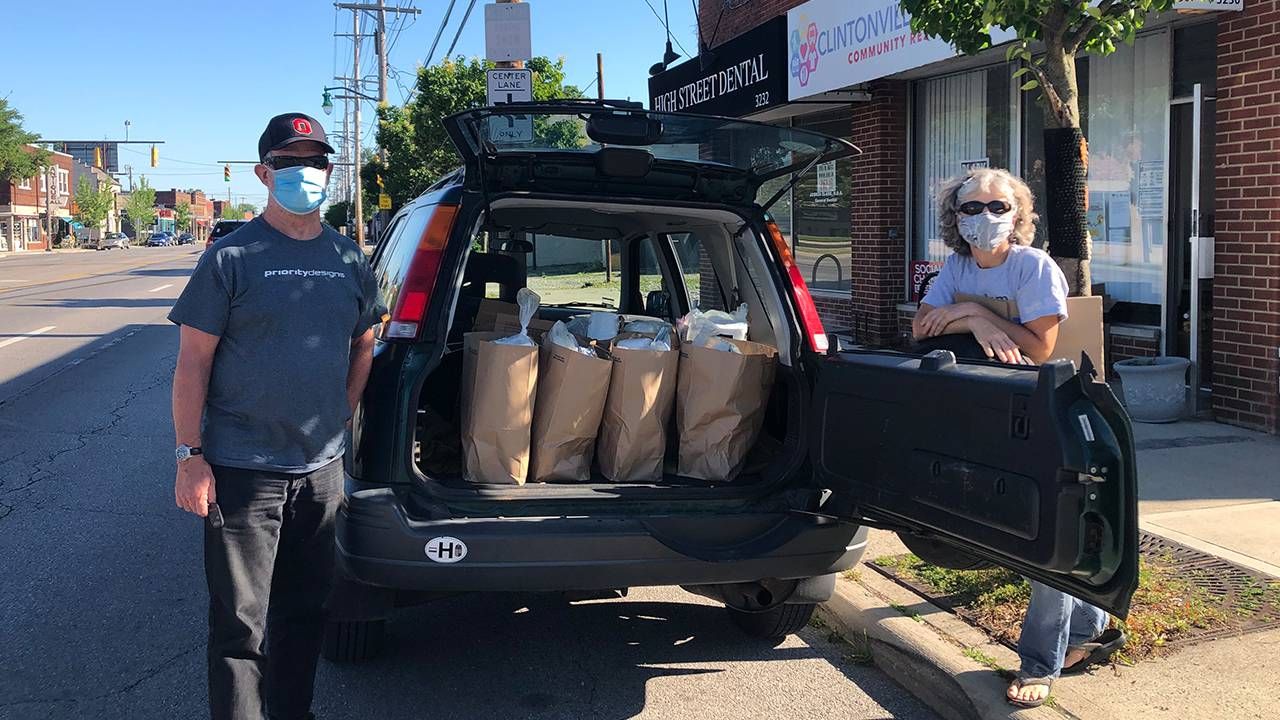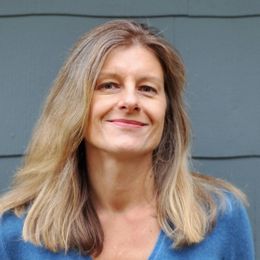How the Villages Network Is Emerging From the Pandemic
COVID-19 stalled many activities in the Villages neighborhood network for older adults, but also brought unexpected benefits
Early in the pandemic, Clara Davison was low on both company and purpose. Davison, 23, lived alone and was working from her Columbus, Ohio home. Her job in alumni relations at Ohio State University usually involved a lot of evening and weekend events. No longer.

Last spring, Davison started volunteering for Village in the Ville, a Columbus member of the Villages organization.
The Villages is a network of local "Villages" spread across the country. Its members are 50 and up who typically pay an annual fee in exchange for help with various tasks of daily life. Each Village is run by paid staff and neighborhood volunteers who aim to help older adults age in place.
Davison began doing regular yard work and gardening for two members, one woman who was 70, the other 92. She also got to know them.
"People you'd never think would volunteer did. We had big Realtor groups offering to help."
"For so many of us and especially for someone my age, you just don't have that neighborly conversation all the time, and especially across generations," she says.
"From my perspective it's been wonderful. Getting to learn more about gardening and about their lives and their stories has been really neat," she added.
Davison is one of a growing number of younger volunteers who have stepped up to help their local Villages during COVID-19.
The Volunteer Pool Changed
Often, the volunteers who keep these grassroots organizations running — by driving members to appointments or helping them with household tasks — are themselves retired. Many of those volunteers retreated to their homes during the pandemic, as did members themselves. At the same time, working-age people who were suddenly home all day were clamoring to help.
"People you'd never think would volunteer did," said Barbara Hughes Sullivan, national director of Village to Village Network, the umbrella organization for the Villages. "We had big Realtor groups offering to help," even though many Realtors have been busier than usual with home sales during the pandemic.
Still, Sullivan said, they — along with many other homebound employees — "want to get out and do something, whether it's winterize or 'summerize' [a home], walk the dog, take the trash barrels in; something to give back to their neighbor."
Despite the volunteer hands on deck, running the Villages during the past 15 months has not been easy. Live events like coffee mornings or movie trips are the lifeblood of most Villages, but during COVID-19, those have largely evaporated.
Some Villages have lost members who don't want to pay their dues when they're only getting a slice of the normal services. Others have seen donations drop.
And there are liability concerns, as Villages creep back to normal life and worry about how to bring everyone back together safely, whether or not they are vaccinated.
Some Villages Forged New Alliances
Still, Sullivan says, the crisis has also brought unexpected benefits.
"We look at the pandemic not as a threat, but as an opportunity."
One of those is new partnerships. She cites Arlington Neighborhood Village in Arlington, Va., as an example.
It recently began working with the local Area Agency on Aging.
"It's always been a competition between the agencies and the Villages," Sullivan said. But the pandemic brought so many needs, the two groups teamed up to solve them.
"The local [Area Agency on Aging] was working actively to get vaccines for people in Arlington County. They were successful, but they needed someone to partner with to get those people to the vaccine," Sullivan said.
They tapped the volunteers at Arlington Neighborhood Village to make those trips, ferrying older adults back and forth. A successful relationship emerged that Sullivan hopes will continue into the future.
"We look at the pandemic not as a threat, but as an opportunity," she said.
At Canopy of Neighbors, the local Village in Buffalo, N.Y., member Janice Franke says she is eternally grateful for the help she's received throughout the past year.
Franke, a former professional singer and tap dancer, is about to turn 85. She still tap dances at home twice a week, but a fall in her yard means she needs regular physical therapy appointments.
She says a volunteer has always been available to take her, masked and with a freshly sanitized car.
"I think they're marvelous," she said.
Pandemic Restrictions Sparked Creative Solutions
Franke has no internet service, something she has in common with many other Village members in Buffalo. Canopy of Neighbors worked hard in the spring of 2020 to set up not only Zoom events, but a "party line" for group phone calls for those without internet.
The member called her one day earlier this year, "longing for someone to take her anywhere — she was going stir crazy."
Franke attends a Villages mindfulness meditation by phone every other week.
"I never lose my desire to do," she said. Her local Village has helped keep her active in body and mind despite all the restrictions on daily life.
Canopy of Neighbors Executive Director Sasha Yerkovich says it has been hard to see members struggle with isolation during COVID-19.
Her Village has yet to return to in-person events and members — like so many other people — are sick of Zoom, according to Yerkovich.
Throughout the pandemic she and her colleagues and volunteers have made numerous calls to check in on people. Sometimes, they've been able to do more than that.
Yerkovich tells the story of one member, a woman who lives alone and walks with increasing difficulty. Getting outside is tough for her and the long Buffalo winters don't make it any easier. The member called Yerkovich one day earlier this year, "longing for someone to take her anywhere — she was going stir crazy."
As it happened, Yerkovich had just been given a wheelchair for members' use. She found a volunteer who knew the woman well. He picked up the wheelchair, put it in his car and — after driving the member to a hair appointment — helped her into the wheelchair and took her out for a spin on the Buffalo waterfront.
It was a beautiful spring day. The woman had such a wonderful time, Yerkovich said, "she wrote me a long note; she wrote him a long note." The member also told her out-of-state son about the outing. He gave the organization a $500 donation to thank them.
"We can't get together in large groups, but those are simple things to do to help somebody," said Yerkovich.
It's not just Village members who are being helped. Clara Davison says she has gained companionship and a new perspective through Jane and Mary, the two women she's been volunteering for through Village in the Ville. "I'd love to keep doing this" long after her work schedule returns to normal, she said.
As a 23-year-old at the start of her career, Davison sometimes feels overwhelmed at the thought of how to navigate the rest of her life.
"It is encouraging to remember that I am young and naïve, that I can learn from those who are older and wiser," she said. "I aspire to be like Jane and Mary when I grow up."


